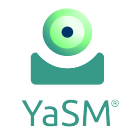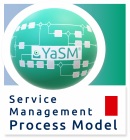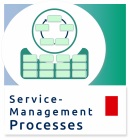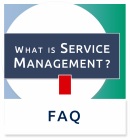ITIL Lite and YaSM
'ITIL lite' or 'lean ITIL' is often put forward as a solution for organizations, especially smaller ones, that find the whole of ITIL® too overwhelming. Since the YaSM model describes a streamlined set of processes, a question often asked is whether YaSM is a lighter or leaner version of ITIL.
What is ITIL Lite?
There is no official light or lean edition provided by the authors of the ITIL framework, so ITIL lite is more of a loosely defined concept. Different flavors of ITIL lite have been described by various parties, typically as SMB-friendly versions of ITIL that provide the key benefits without adhering to the complete set of ITIL guidelines.
Lightweight versions of ITIL are usually about selecting and implementing key ITIL components. This is perfectly feasible, since ITIL is not meant to be a manual to be followed exactly to the letter. Rather, organizations are encouraged to adapt the ITIL guidance to their own needs and circumstances, and ITIL 4, the latest edition of ITIL, introduces a new focus on simple and practical solutions.
Drawbacks of the lean ITIL approach
Lightweight versions of ITIL are usually about filtering out the more "sophisticated" ITIL elements. In many "ITIL lite" concepts, picking key components means selecting a number of "core" processes for implementation and leaving away the others. This has some serious drawbacks.
For example, light approaches to ITIL typically include incident, service request and problem management, but service strategy is often filtered out. The reason may be that the official ITIL V3 publication about service strategy is somewhat daunting, describing a set of service strategy processes on some 450 pages.
Yet even smaller organizations will benefit from having a service strategy in place. So rather than cutting out the topic of service strategy, these organizations would be better advised to implement a simple and straightforward strategic process.
Much the same applies to other elements of ITIL that are often perceived as difficult, such as capacity and availability management. Rather than ignoring these processes altogether, organizations should seek to implement practical ways of managing service capacity and availability.
The differences: ITIL Lite and YaSM
YaSM describes a lean set of processes - but includes all service lifecycle and therefore avoids the drawbacks of the ITIL lite approaches. The idea behind YaSM is to keep the processes simple and practical, without filtering out whole elements of ITIL.
Taking the example of service strategy further, YaSM does not omit service strategy, but contains a streamlined and straightforward strategic process outlined in a few flowchart diagrams, plus a document template for the service strategy. Implementing this process is quite feasible even for smaller organizations.
Note, however, that YaSM provides recommendations. Implementing a strategic process is by no means mandatory - but YaSM may enable service providers to implement a strategic process, even in situations where an organization wants to adopt a "light" or "lean" version of ITIL.
The decision on which YaSM process you choose and how you adapt them to your specific requirements should be driven by your business needs.
Resources and further reading
- YaSM and ITIL 4: How the YaSM model relates to the latest edition of ITIL 4
- YaSM and ITIL V3 - Comparison: YaSM service management vs. ITIL V3
- YaSM and other service management frameworks and standards.
By: Stefan Kempter ![]() , IT Process Maps.
, IT Process Maps.
What is ITIL lite? › Drawbacks of the lean ITIL approach › The differences: ITIL Lite and YaSM






